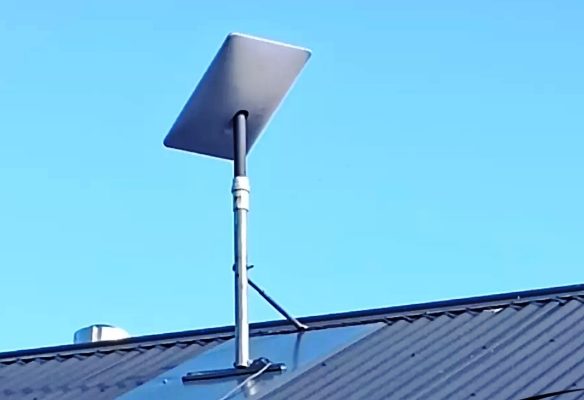By Osasome, O.C and Nana Theresa Timothy
‘Starlink, Elon Musk’s satellite internet constellation, continues its rapid expansion across Africa. It officially launched services in Cape Verde as the 18th African country to adopt its low-Earth orbit (LEO) satellite-based connectivity solution.
RELATED: Starlink halts price hike for Nigerian subscribers amid regulatory and customer backlash
This marks Cape Verde as the 117th country globally to join Starlink’s growing network. It also signaled its mission to bring high-speed internet access to underserved and rural communities.
Addressing Africa’s Connectivity Challenges
Africa faces persistent challenges in achieving widespread internet connectivity. Across many regions, urban centers enjoy relatively reliable broadband services. But rural and underserved areas still struggle with limited or no access. Cape Verde exemplifies this disparity, with urban hubs like Praia and Mindelo boasting better internet options compared to rural regions that rely on slower mobile or satellite connections.
Starlink’s LEO satellite technology offers a potential solution to bridge these gaps by delivering high-speed, low-latency internet, even in remote areas. This development aligns with Cape Verde’s national strategy to enhance digital infrastructure and foster economic development through technological innovation.
Starlink’s Market Push Across Africa
Cape Verde joins countries like Nigeria and Kenya, where Starlink has rapidly gained traction. In Nigeria, Starlink has become a preferred internet service provider (ISP) for many, thanks to its high-speed internet offerings. However, its growing dominance has raised concerns among local ISPs, who accuse the company of unfair competition and market disruption.
Regulatory challenges have also emerged. In Nigeria, a proposed price hike by Starlink was recently nullified by the regulator, citing a lack of approval. Despite these hurdles, regulatory bodies in Southern Africa and beyond are increasingly embracing LEO satellite operators as a means to close connectivity gaps.
The Growing Competition in Africa’s Satellite Internet Market
Starlink’s success in Africa has spurred interest from other satellite internet providers, including OneWeb, Project Kuiper, EchoStar Mobile, and Inmarsat. These companies are eyeing Africa for market entry by 2025, promising increased competition and innovation in the satellite internet space.
Opportunities and Impact in Cape Verde
The arrival of Starlink in Cape Verde is expected to revolutionize internet services in underserved areas, improving download and upload speeds, enhancing streaming experiences, and enabling better access to digital services. Key sectors like education, healthcare, and tourism stand to benefit significantly from this improved connectivity.
Moreover, the Cape Verdean regulatory authority, Agência Reguladora Multissectorial da Economia (ARME), has emphasized the importance of fair competition and quality in the communications sector. Starlink’s entry aligns with these goals, potentially setting a benchmark for digital transformation in the region.
Challenges Facing Starlink’s Expansion
Despite its potential, Starlink’s African expansion faces challenges:
- Affordability: While Starlink promises improved internet access, the cost of its services remains a barrier for many users in low-income communities.
- Regulatory Hurdles: Securing approvals and navigating complex regulatory landscapes in various African countries can slow deployment efforts.
- Market Disruption Concerns: Indigenous ISPs in countries like Nigeria have accused Starlink of muscling them out of the market, prompting calls for balanced regulatory oversight.
A Vision for the Future
Starlink’s growing footprint across Africa represents a transformative step in addressing the continent’s connectivity challenges. By focusing on underserved regions, the satellite internet provider aims to bridge the digital divide, supporting innovation and economic growth. As more players enter the market, the competition will likely drive affordability and accessibility, ensuring broader adoption of satellite-based connectivity solutions.































